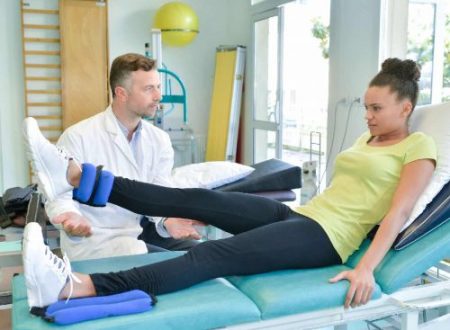It’s sad but true, you can’t rush your recovery after having ankle surgery
Ankle surgery recovery isn’t a walk in the park (pun intended), but getting back into your regular workout routine doesn’t have to be like a grueling marathon either. It’s a big change to your lifestyle when you’re recovering from a broken ankle, but the time you invest now will pay off big time in the near future.
Firstly, let’s properly set your expectations for recovery.
What to expect after ankle surgery?
- A cast will be applied or you might need to wear a boot. This will immobilize your foot and ankle while the bones knit back together and it critically important part of your ankle surgery recovery.
- You’re likely to be placed under weight-bearing restrictions. Be sure to learn from your doctor how much weight, if any, you are initially allowed to put on your injured foot.
- You should be given a schedule for the time intervals at which you’ll be allowed to gradually increase the weight you can place on the injured foot.
- You probably will be given some sort of assistive device, like crutches, a wheeled walker, or a quad cane, to travel any significant distance. Make sure to ask your doctor a head of time if you will require any of these.
Physical therapy for an ankle fracture

Your cast will be removed once the bones of your fractured ankle have healed. You’ll be able to place more weight on the foot, though you may still need to use a cane or crutches to maneuver your way through the day.
There will be residual post-surgical swelling, which is likely to increase as soon as the restriction imposed by the cast is removed. The old standard RICE (rest, icing, compression, and elevation) regimen will help your ankle get back to its normal size and shape.
Your physical therapist will next go to work on bringing you back to your pre-surgery life. A full evaluation of your ankle will help design a program custom-built for you and your ankle. The evaluation will include consideration of your gait and ankle range of motion.
What is gait?
“Gait” references your pattern or style of walking. In order to resume your normal gait, you’ll need to regain both strength and balance. One foot is off the ground 40% of the time while you’re walking, so the ability to balance on one foot is essential to a normal gait. Your therapist will recognize your usual gait pattern and enable you to regain it as quickly as possible.
What is range of motion?
The measurement of how much movement in all directions your ankle can accomplish is called your ankle range of motion. It will be measured at the beginning of your physical therapy and periodically thereafter, as you regain ankle flexibility and get back to your usual capabilities.
Your physical therapy exercise program
After your evaluation, your therapist will begin providing treatment. Therapeutic techniques involving temperature and electrical stimulation will be utilized to reduce the pain and swelling in and around your ankle.
You’ll also be introduced to various types of exercises. Some exercises will increase your ankle’s range of motion and others will strengthen the muscles surrounding your ankle. You’ll also exercise your hips and legs in order to regain your full walking (and, eventually, running) capability. All these techniques are very important if you want a great ankle surgery recovery.
Your therapist will teach you exercises to help you regain your balancing ability and your proprioception (your sense of how you are situated in relation to your surroundings).
According to the medical maxim known as Wolff’s law, bones grow and are configured in direct response to the stresses placed upon them. Your therapist will provide the exercises that create the right stresses to ensure that your ankle is maximally restored.
Home exercises to continue rehabilitating your ankle
After you no longer see your therapist, you’ll need to follow the home exercise protocol your therapist will design for you. This program may last for several months. And you’ll probably want to incorporate some aspects of your post-surgery exercise plan into your permanent, lifelong, exercise program.
If you’re experiencing problems with your feet in any way, we’re here to help. Our nationally recognized foot and ankle specialists offer the most advanced podiatric care with the highest success rates in the nation. We are leaders in the research and treatment of all foot and ankle conditions.
For more information or to schedule a consultation, please call (877) 736-6001 or visit us at www.footankleinstitute.com.
- What To Do When Your Toenail Is Falling Off - October 21, 2024
- How To Tell If You Have Wide Feet - October 3, 2024
- 15 Summer Foot Care Tips to Put Your Best Feet Forward - July 1, 2024

I like that you mention how it takes time to recover after ankle surgery and to listen to your doctor, such as using any assistive devices you need. This would be important to ensure that you can recover completely and don’t relapse or have any other problems. If you require surgery, you’d probably want to discuss the entire process in depth with your ankle doctor beforehand so you can give yourself enough time for recovery and therapy after.